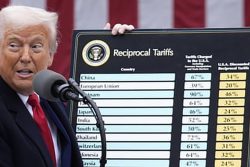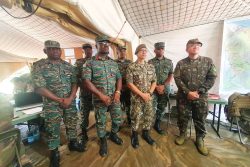December 17, 1903. On a small island off the coast of North Carolina, a contraption made of not much more than wood and cloth with a small engine and propeller strapped to its front flew a distance of 120 ft along the sand dunes.
It was a flight less than a football field but one closer to infinity in its consequences. It remains arguably the biggest technological advance of the 20th century, far more impactful than “one small step for man” – which did at least give us the non-stick frying pan. It led to the creation of an industry that today moves some 4.5b people around the planet every year. To get on a plane in London and wake up in Tokyo is aeronautical alchemy.
But that first flight at Kitty Hawk was not like some inventions – a happy fluke. It was the culmination of years of painstaking research and experimentation which offers lessons to all of us.
Orville and Wilbur Wright were actually the youngest of five siblings born into a MidWestern family who eventually settled down in Dayton, Ohio. According to Pulitzer Prize winning author David McCullough in his 2015 book, “The Wright Brothers”, their father was an itinerant preacher who instilled in his children discipline and a strong work ethic as well as a love for reading and curiosity about everything, be it art or science.
From the start the brothers were inseparable, finishing each other’s sentences but also arguing incessantly which actually helped a great deal in interrogating their future theories on flight.
Now a rustbelt city, Dayton in the late 1800s was a centre of industrial innovation. Indeed the nation, having come out of the Civil War, was also enjoying an era of high optimism, embracing its Manifest Destiny. Anything was possible both for the country and its people. Inventions such as the Otis elevator (1853) (encouraging the construc-tion of high rise buildings); Alexander Bell’s telephone (1875); and Kodak’s handheld camera (1888) were taking hold.
The brothers originally jumped on the “safety bicycle” mania of the 1890s, opening a highly successful repair shop in 1893 eventually produc-ing their own models. But they became fascinated by the idea of flight after Wilbur read about the exploits of the German pioneer Otto Lilienthal who had concluded that the secret to flight was to be found in the arch of a bird’s wing. Wilbur was undeterred that Lilienthal was killed in (predictably) a gliding accident in 1896. He began to study birds both from books – thanks to the assistance of the Smithsonian Institute – and from nature, observing them for hours on the banks of Dayton’s Miami river. He confirmed the fundamental truth that birds achieved lift because air moved faster over the top of their wings thereby making the pressure less than that under the wing.
The brothers started with several unmanned prototypes, and having contacted the US Weather Bureau, they decided upon a spot on the outerbanks of North Carolina where the winds were a constant 10 to 20 mph.
Their first manned prototype – without an engine – cost $15. In October 1900 they managed to execute numerous manned gliding flights of several hundred feet. But engine driven and controlled flight was some way off and there were several more expeditions to Kitty Hawk and numerous setbacks before that famous day in 1903 when “The Flyer” made that first attempt. Fortunately a camera was on hand to capture that exact moment. After the first run it was no holds barred and the brothers spent the rest of that magical day competing to fly further and further. In the afternoon they sent a telegram to their father:
SUCCESS FOUR FLIGHTS THURSDAY MORNING ALL AGAINST TWENTY ONE MILE WIND STARTED FROM LEVEL WITH ENGINE POWER ALONE AVERAGE SPEED THROUGH AIR THIRTY ONE MILES LONGEST THIRTY ONE SECONDS INFORM PRESS HOME FOR CHRISTMAS OREVELLE WRIGHT”
In the months to come they devised equipment to turn their plane in the air among other inventions whose principles are still behind modern aviation. They went on to hold aerial shows first in their hometown of Dayton, then in France and Washington where crowds came out in their hundreds of thousands to see them. They were a sensation! Wilbur died in 1912 of typhoid fever, only 45 years old. Orville spent much of his remaining years defending the brothers’ patents from various infringements. He died in 1948 having seen his invention used in two world wars to devastating effect. On this, he remarked, “No, I don’t have any regrets on my part in the invention of the airplane but no one could deplore more than I do the destruction it has caused.”
What might we learn from the Wright Brothers? It is important to note that at the time, the idea of flight was considered by many as preposterous and those who were attempting it, reckless crackpots. Many in fact were, but not the Wright Brothers. They ignored the sceptics and the crucial difference is that they went about it with extraordinary diligence and methodology. In other words they not only dreamt of flight but put in the work to understand it and make it happen and they had the resolve to overcome setbacks. It was as if they believed before they even knew it, that flight was possible. It was as one breathless reporter who witnessed those first flights said “a touchable embodiment of an idea”.
We can also see how the help of government agencies was crucial to their success including the gathering of data and information and making it easily accessible to all citizens. And finally the brothers put safety first. Initially they never flew more than a few feet off the ground and despite numerous crashes they suffered no broken limbs. Later on they also never flew together or at the same time, because they knew that this would put an end to their endeavours. That emphasis on safety continues today in an industry that has an extraordinary record despite the inherent danger of gravity! Perhaps the brothers are why we still have to be reminded how to buckle up our seatbelts!
Would someone else have invented manned flight were it not for the Wright Brothers? Certainly, it was only a matter of time before mankind would have figured it out. It matters not. The two brothers were capable, the time was propitious and the wind was at their backs. They seized the moment!









